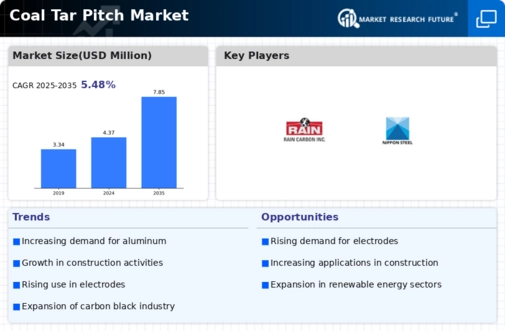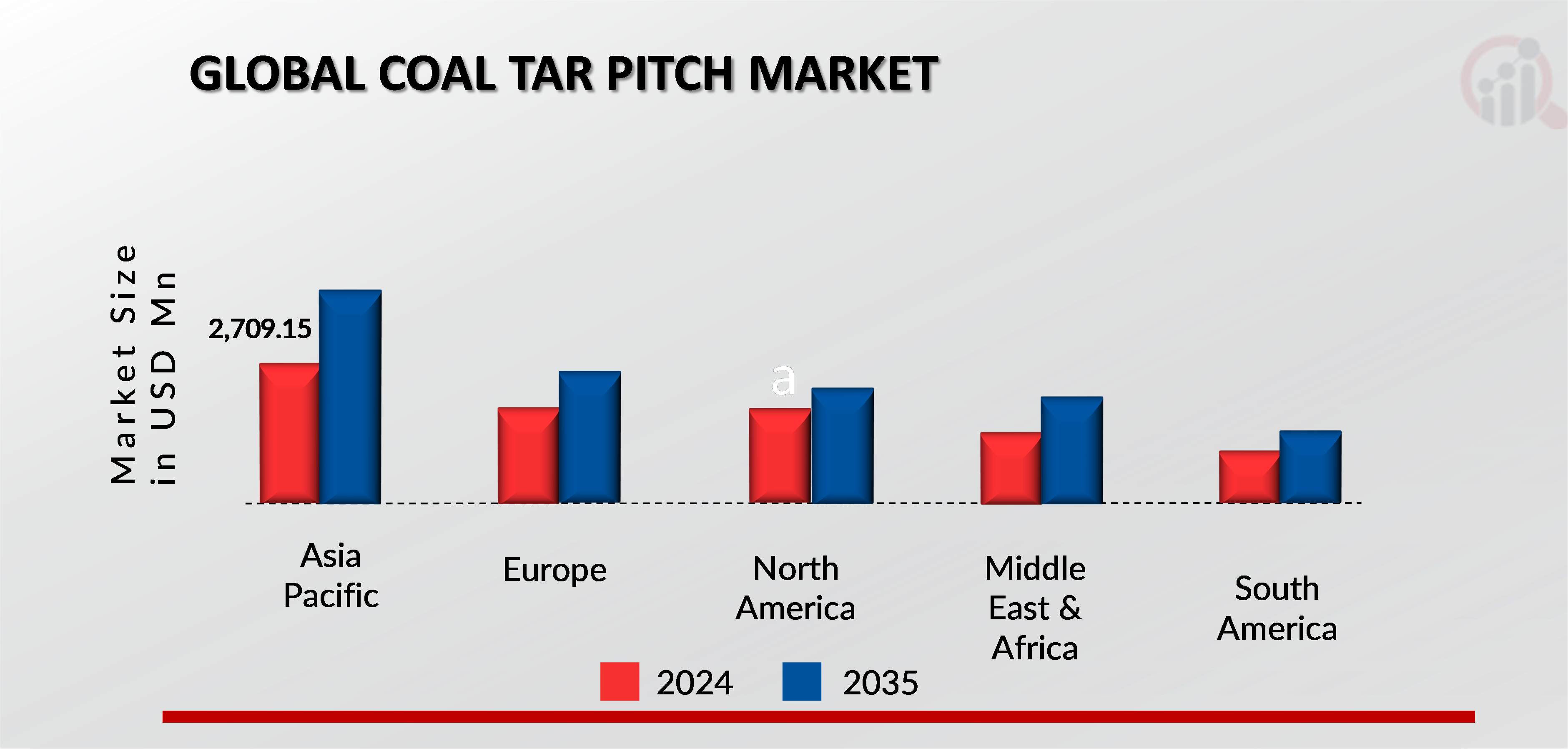Market Analysis
In-depth Analysis of Coal Tar Pitch Market Industry Landscape
The coal tar pitch market operates within a dynamic landscape influenced by various factors that shape its growth and evolution. Coal tar pitch is a viscous black liquid obtained as a by-product during the distillation of coal tar, primarily used as a binder in the production of carbon anodes for the aluminum smelting industry, as well as in the manufacturing of electrodes, refractory materials, and specialty chemicals. One of the primary drivers of market dynamics is the demand from the aluminum industry. Coal tar pitch is a crucial component in the production of carbon anodes used in the electrolytic reduction process to produce aluminum. As the global demand for aluminum continues to grow, particularly in industries such as automotive, aerospace, and construction, the demand for coal tar pitch is expected to remain strong, driving market growth.
Technological advancements play a significant role in shaping the competitive landscape of the coal tar pitch market. Innovations in distillation processes, refining techniques, and product formulations have led to improvements in pitch quality, consistency, and performance. Advanced purification methods such as solvent extraction, centrifugation, and filtration enable manufacturers to produce high-quality coal tar pitch with low impurities and desirable properties for various industrial applications. Moreover, the development of alternative binders and carbon materials offers opportunities for market players to diversify their product offerings and cater to evolving customer needs.
Market dynamics in the coal tar pitch industry are also influenced by economic factors such as industrial production, infrastructure development, and global economic conditions. Economic growth and industrialization drive demand for coal tar pitch in emerging markets, where governments are investing in infrastructure projects, transportation networks, and urban development. Conversely, economic downturns or recessions may lead to reduced demand for aluminum and other industrial materials, affecting market dynamics in the coal tar pitch sector. Moreover, fluctuations in commodity prices, currency exchange rates, and trade policies can impact the cost of raw materials and affect the profitability of coal tar pitch manufacturers operating in the global market.
Environmental regulations and sustainability concerns are increasingly shaping the dynamics of the coal tar pitch market. Coal tar and its by-products are considered hazardous substances due to their carcinogenic and toxic properties. As a result, governments and regulatory bodies are implementing stricter environmental regulations to reduce emissions, improve waste management practices, and promote sustainable alternatives in the production and use of coal tar pitch. Coal tar pitch manufacturers are responding to these regulations by investing in pollution control technologies, adopting cleaner production processes, and exploring alternative raw materials and binders. Moreover, there is a growing demand for eco-friendly and sustainable carbon materials, driving innovation and market growth in green pitch solutions.
Customer preferences and industry trends also influence market dynamics in the coal tar pitch sector. End-users, including aluminum smelters, steel manufacturers, and specialty chemical producers, are increasingly seeking coal tar pitch products that offer consistent quality, reliability, and performance. Industry trends such as lightweighting, electrification, and sustainable manufacturing practices are driving the demand for carbon materials and products with low environmental impact. Furthermore, the shift towards circular economy principles and closed-loop supply chains is creating new opportunities for coal tar pitch manufacturers to develop recycling and recovery solutions that minimize waste and maximize resource efficiency.
The competitive dynamics within the coal tar pitch market are characterized by intense rivalry among key players competing for market share and profitability. Market participants range from large multinational chemical companies to smaller regional producers and traders. Strategies such as vertical integration, product differentiation, and strategic alliances are commonly employed by companies to strengthen their market position and gain a competitive edge. Additionally, quality assurance, technical support, and customer service initiatives are essential for companies to maintain customer satisfaction and loyalty in a highly competitive market environment.






Leave a Comment